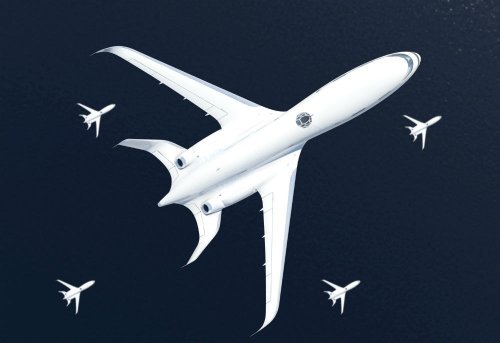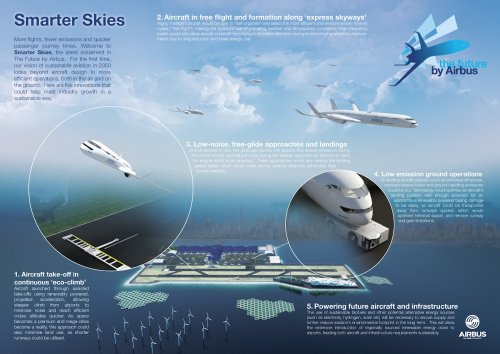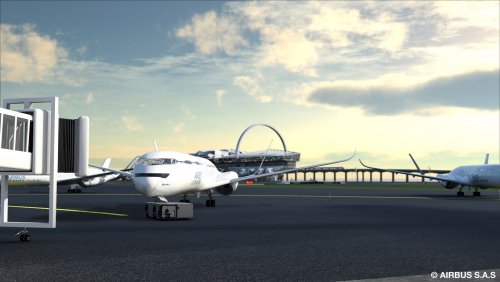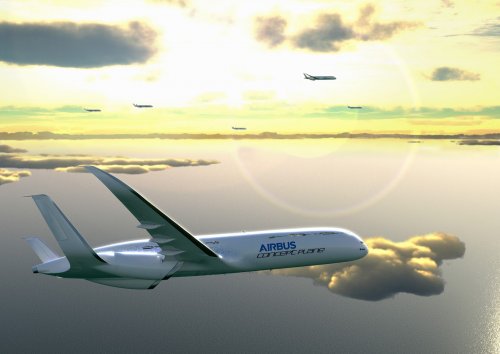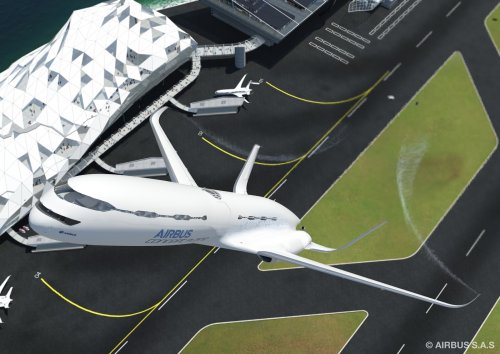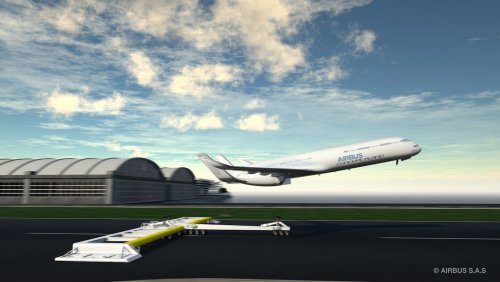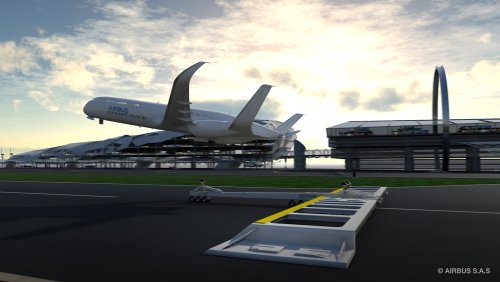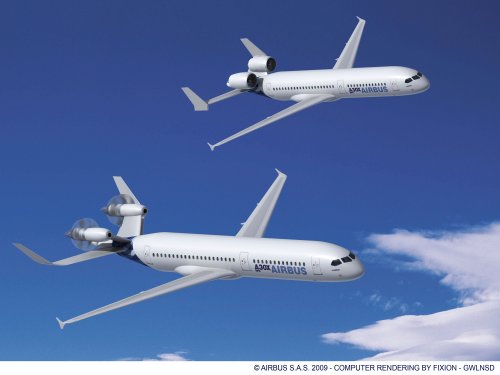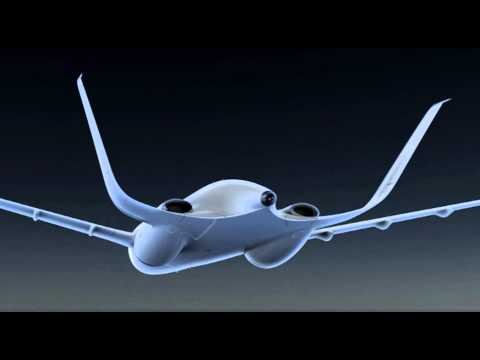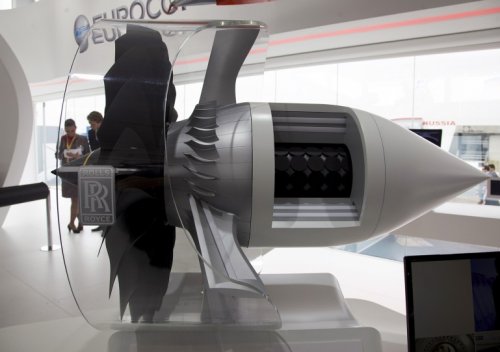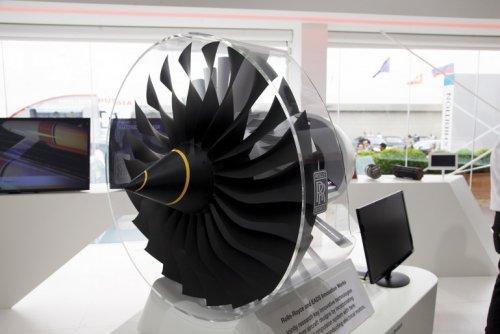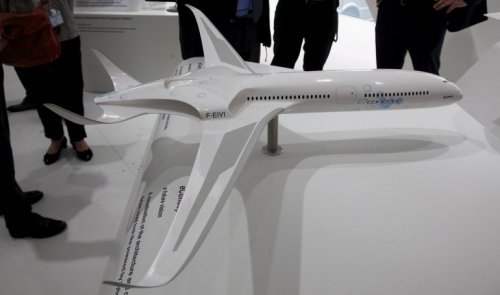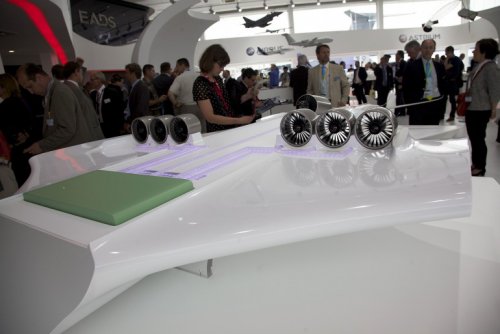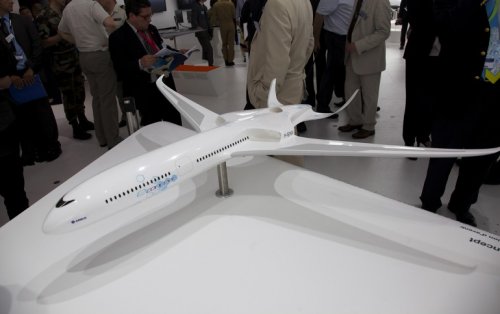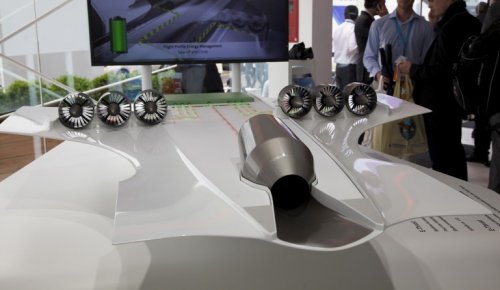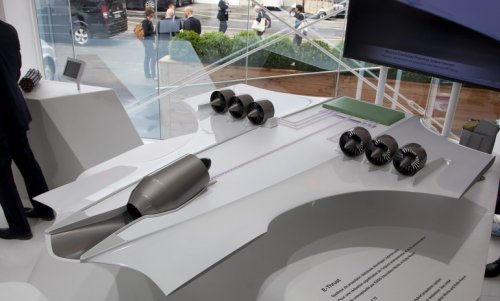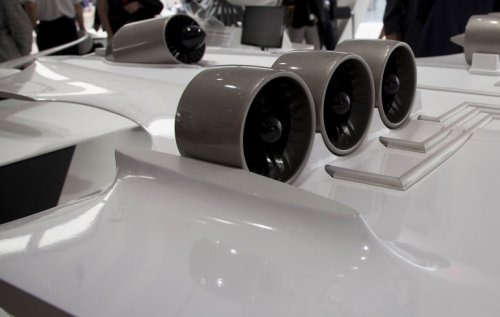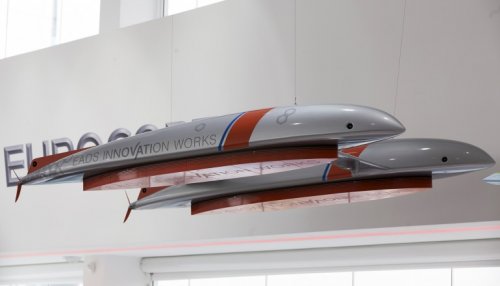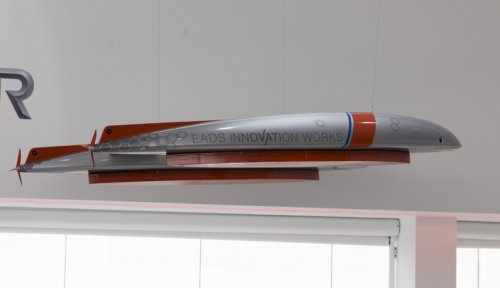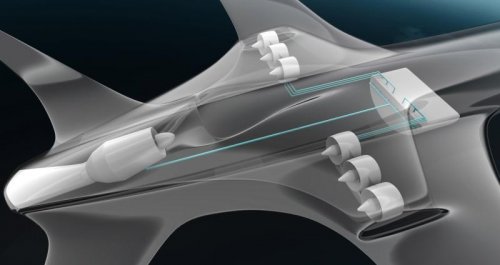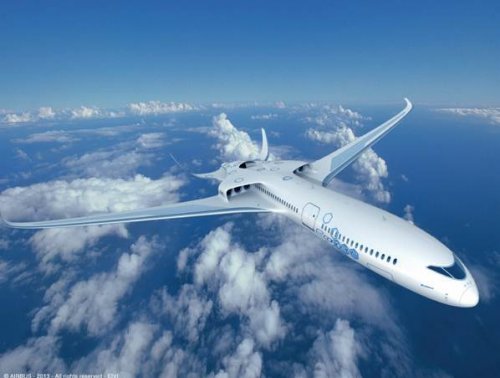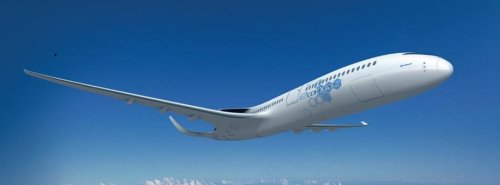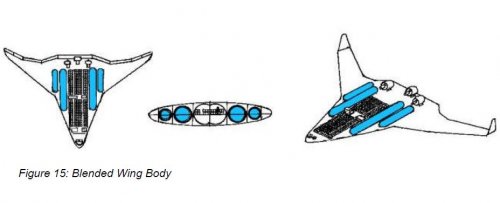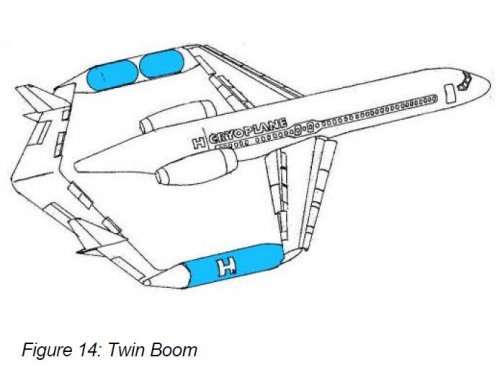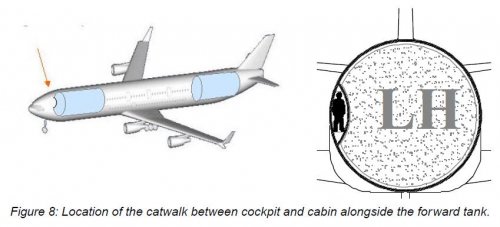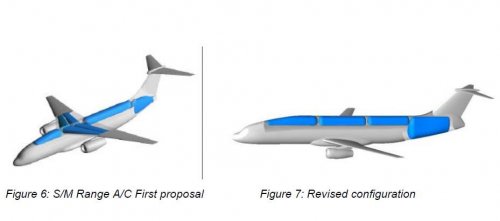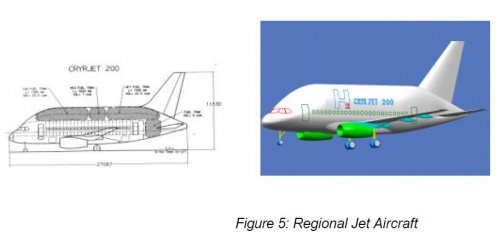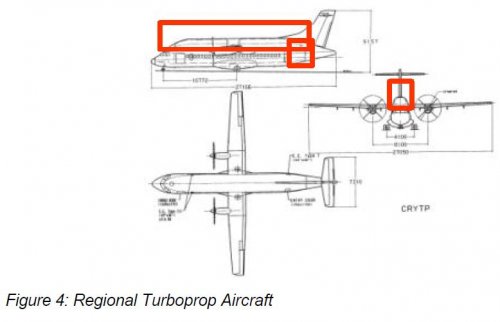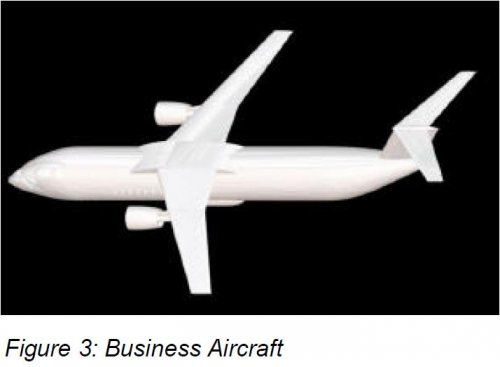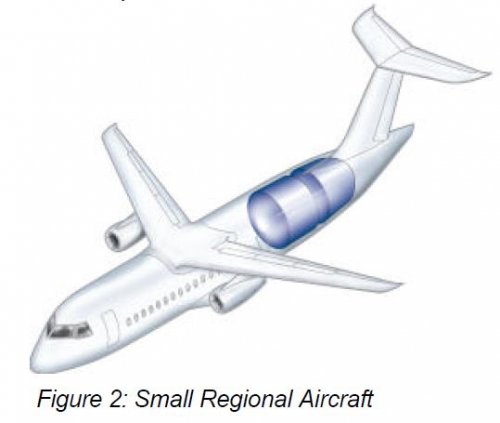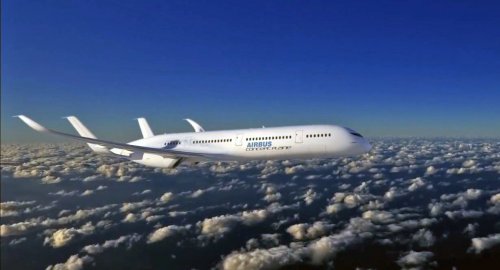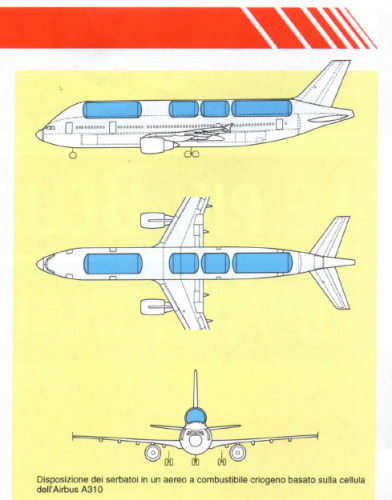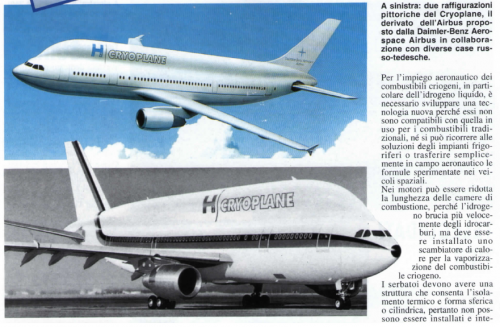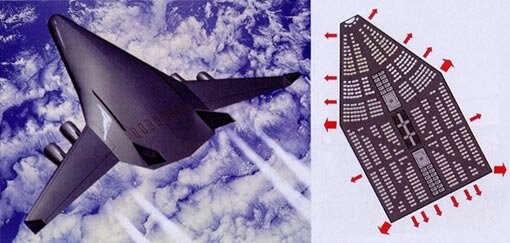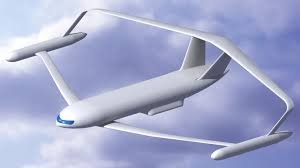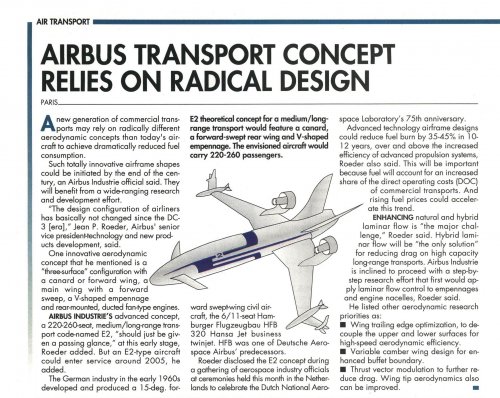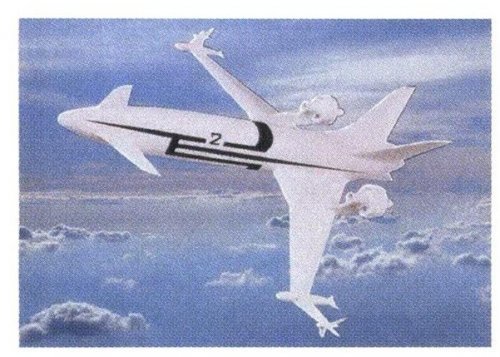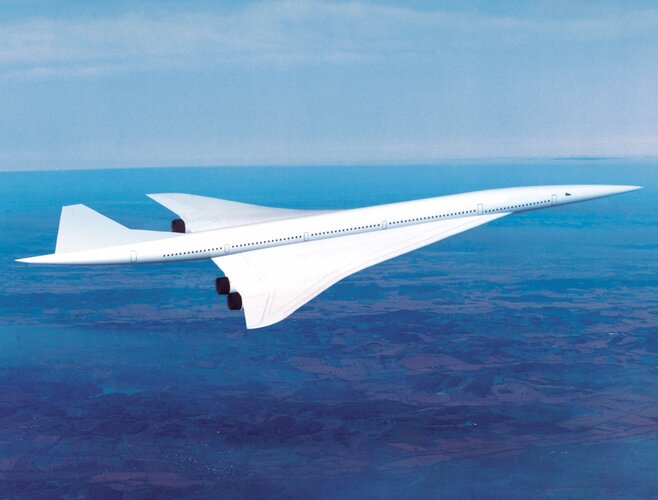EADS has once again taken to the Paris Air Show to present a vision of commercial aviation in 2050. Developed in partnership with Rolls-Royce to increase the efficiency of future airliners, its E-Thrust concept is a hybrid electric propulsion system that EADS says could cut fuel consumption, emissions and noise. EADS and Airbus have baked the E-Thrust into an aircraft design, which EADS calls the eConcept.
Described as an intermediate step on the road to all-electric aircraft, the E-Thrust is a "Distributed Propulsion" system comprised of numerous electric fans arranged in clusters along the length of each wing. However, the battery (referred to as a storage system, but we'll call it a battery for convenience) powering the fans is charged by an onboard "advanced gas power unit," which is why EADS is calling this a hybrid system.
Applied to the eConcept, though the best number of fans is still to be worked out, Airbus is confident that a single larger gas power plant is better than several smaller ones. This would allow a unified exhaust duct and particulate filter, and would apparently reduce noise overall.
One advantage of the E-Thrust system is that the additional power required for take-off can be met by charging the batteries on the ground (and theoretically from a clean, renewable source). The gas power plant only need serve when the eConcept is in the air, allowing this component to be downsized.
When cruising, the gas power plant powers the fans direct, though the battery is also recharged to power an emergency landing should the gas system fail. In descent, the fans and gas power plant are shut down, the eConcept effectively becoming a glider. However, as the fans start to turn of their own accord, electrical power could conceivably be generated, topping up the battery if required. Though the gas system is restarted for landing, this is solely as a backup to power the fans should something go wrong with the battery.
It's claimed that a Distributed Propulsion system allows an increase in bypass ratio, which, in a turbofan engine, is the ratio of air mass drawn through the fan but which bypasses the combustion chamber to the mass of air which passes through it. Whereas a 12:1 ratio is achievable today, EADS claims that ratios of 20:1 or better are possible with this system, allowing reductions in fuel consumption. However, EADS calls this an "effective bypass ratio" because, unlike in a turbofan engine, the airstreams flowing into the fans and into the combustion chamber are completely separate.
EADS also argues that this distributed approach affords much more leeway in airframe design. Forms which reduce weight and drag, decrease the size of the vertical tail plane and improve weight distribution should be possible, it says.
To make the E-Thrust system viable, superconducting technology would be required to reduce the size of the electrical components, combined with next-generation electrical storage technology (EADS has its eye on Lithium-air batteries) capable of energy densities over 1,000 Wh/kg.
E-Thrust falls under EADS' Distributed Electrical Aerospace Propulsion (DEAP) project, which seeks to meet the targets set out in the European Commission's report Flightpath 2050 – Europe's Vision for Aviation. Specifically, the report calls for a 75 percent reduction in C02 emissions, 90 percent reductions in NOx emissions, and 65 percent reduction in noise levels by 2050, compared to the year 200.
Though tempting to dismiss this as purely speculative, EADS could have presented an all-out electric airliner covered head to toe in solar panels (In fact, EADS did present an all-electric concept called the VoltAir at Paris in 2011). That it's put forward what amounts to a stop-gap system in itself lends credence to the proposal. People appear to be thinking very seriously about the evolution of commercial flight.


